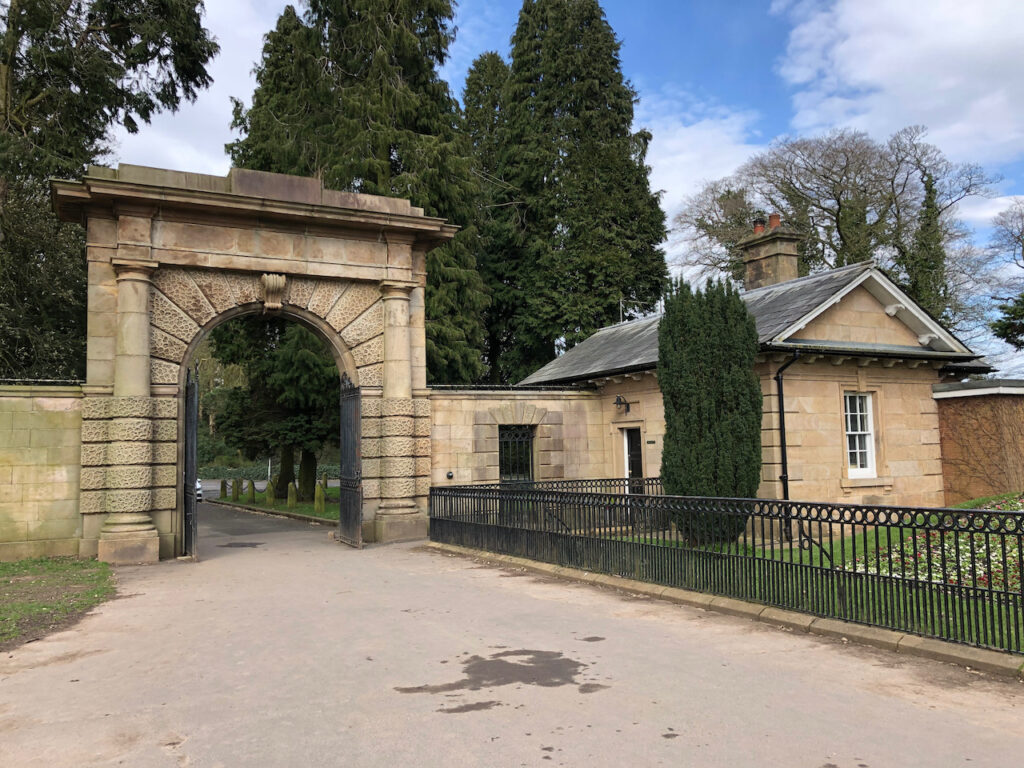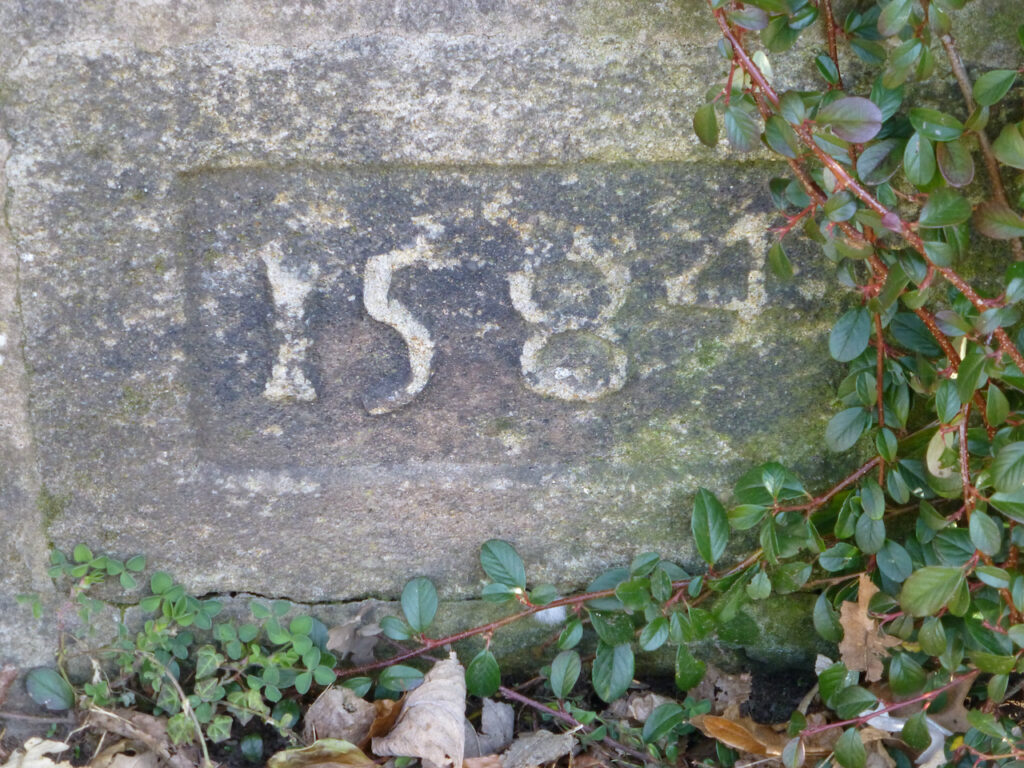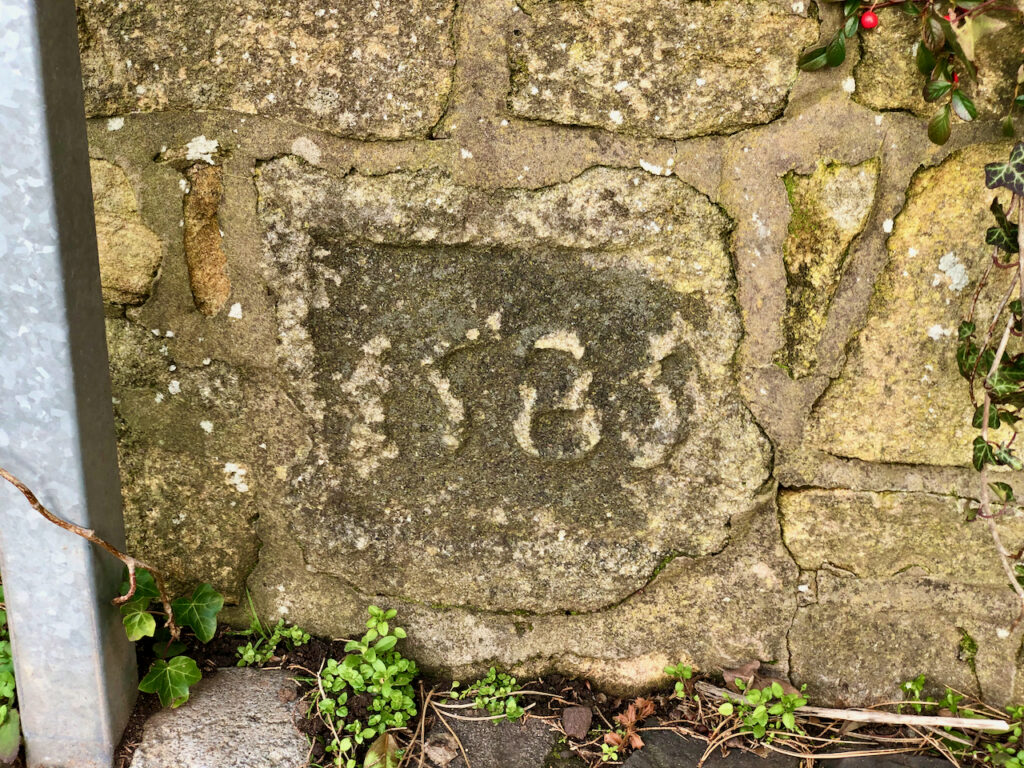Worden Lane runs south from the top of Fox Lane towards Holt Brow passing Worden Park. Like many roads in Leyland it has had numerous names in the past: Whittaker Lane, then Lodge Lane, more recently New Road, and today – Worden Lane.
At the north end of Worden Lane stands the Leyland Drinking Well and Leyland Cross.
St Andrew’s Parish Church Hall
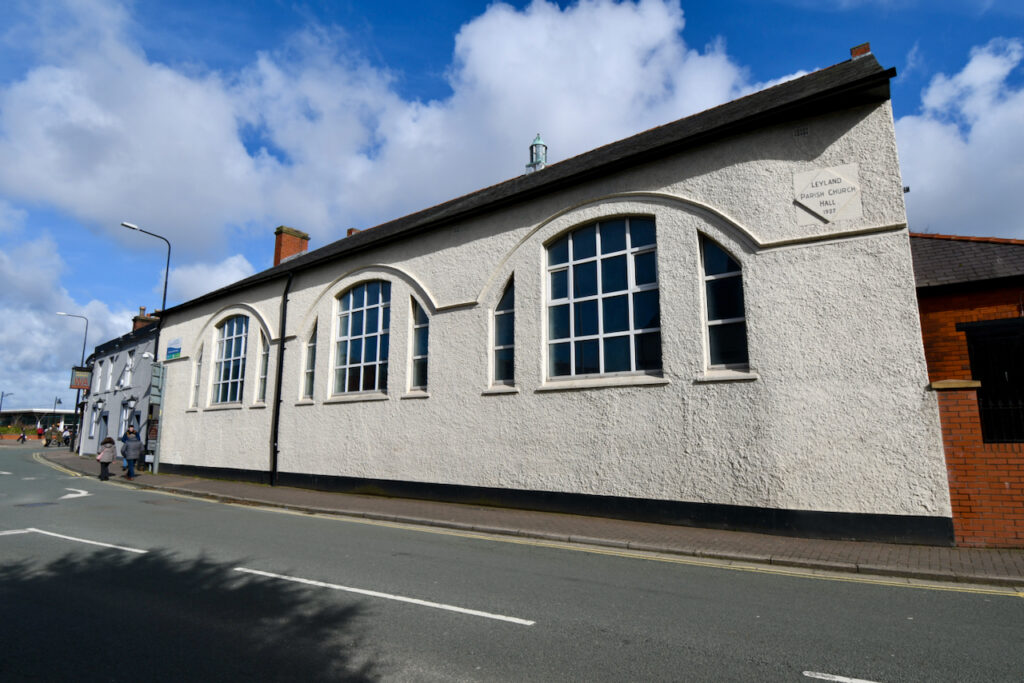
Occleshaw House
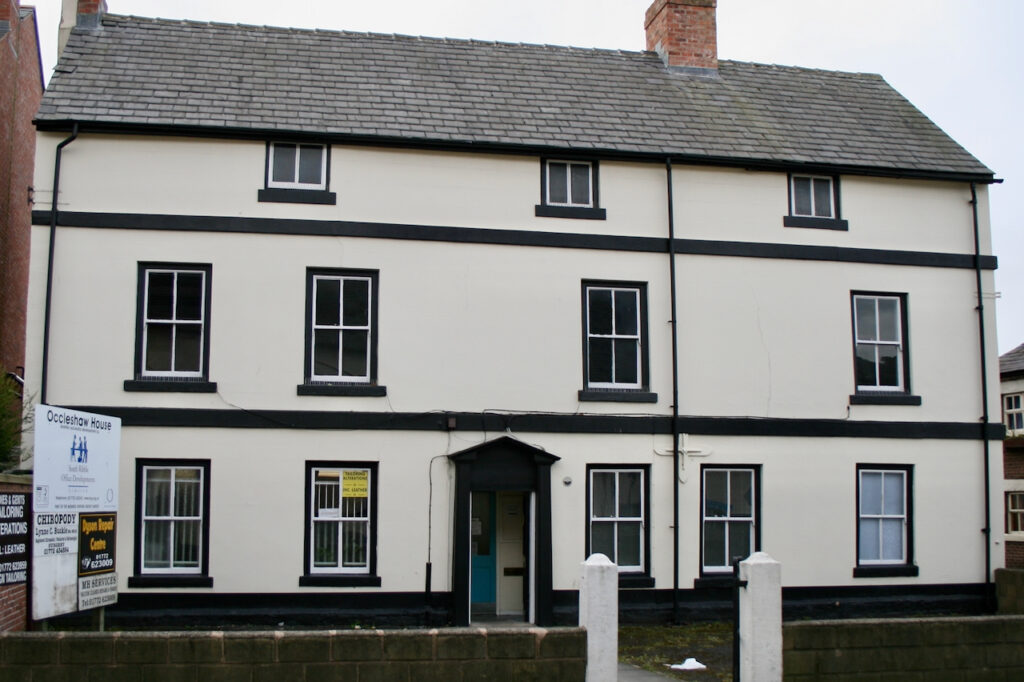
Leyland House
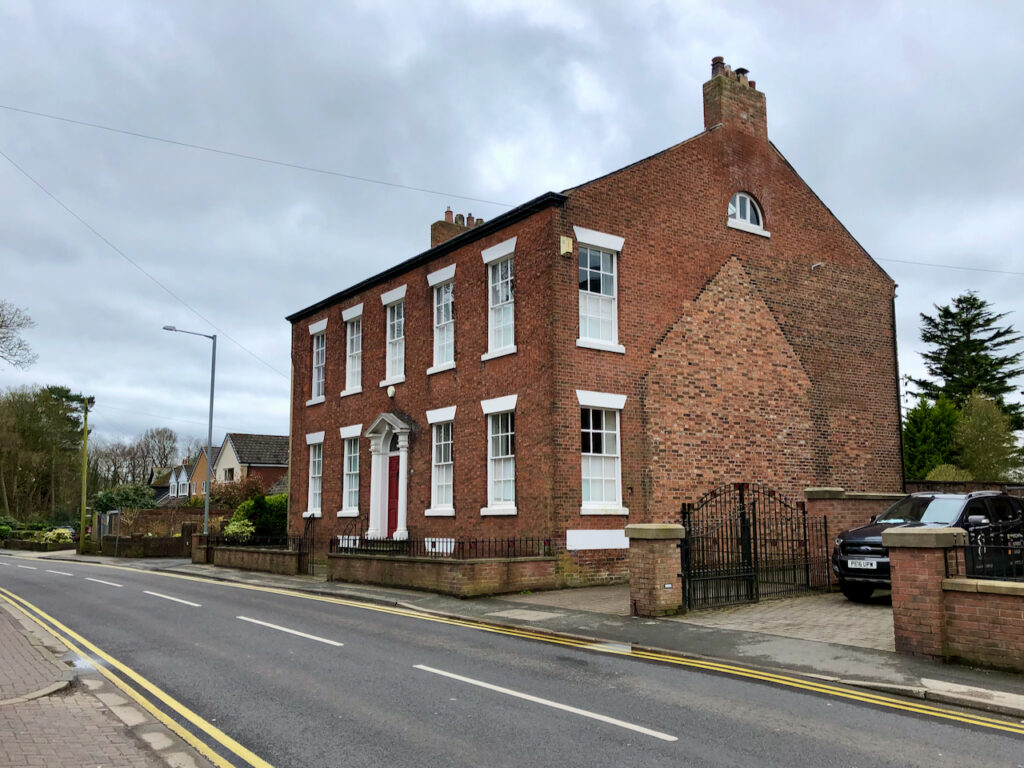
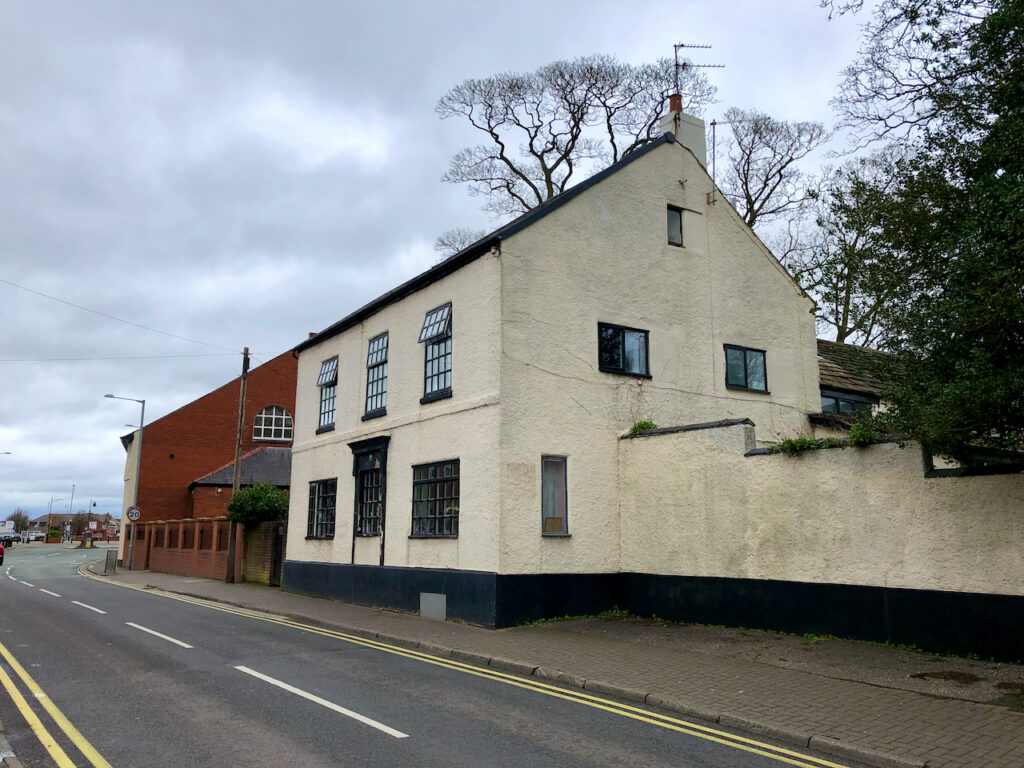
Date Stones
A pair of carved date stones in a wall beside Clough House on Worden Lane. One shows 1584 and the second shows 1585. They are not in their original locations as it is thought they came from St Andrew’s Church.
St Mary’s Roman Catholic Church
Established in 1854 by Rev. Henry Anselm Brewer, the Roman Catholic Church of St Mary’s replaced the earlier chapel of St Andrew the Apostle that had been opened in Leyland House. The church was enlarged in 1919 and was used until it closed in 1961 when the new St Mary’s church was built in Broadfield Drive. Only the front wall now remains. There is a graveyard behind which includes a war memorial.
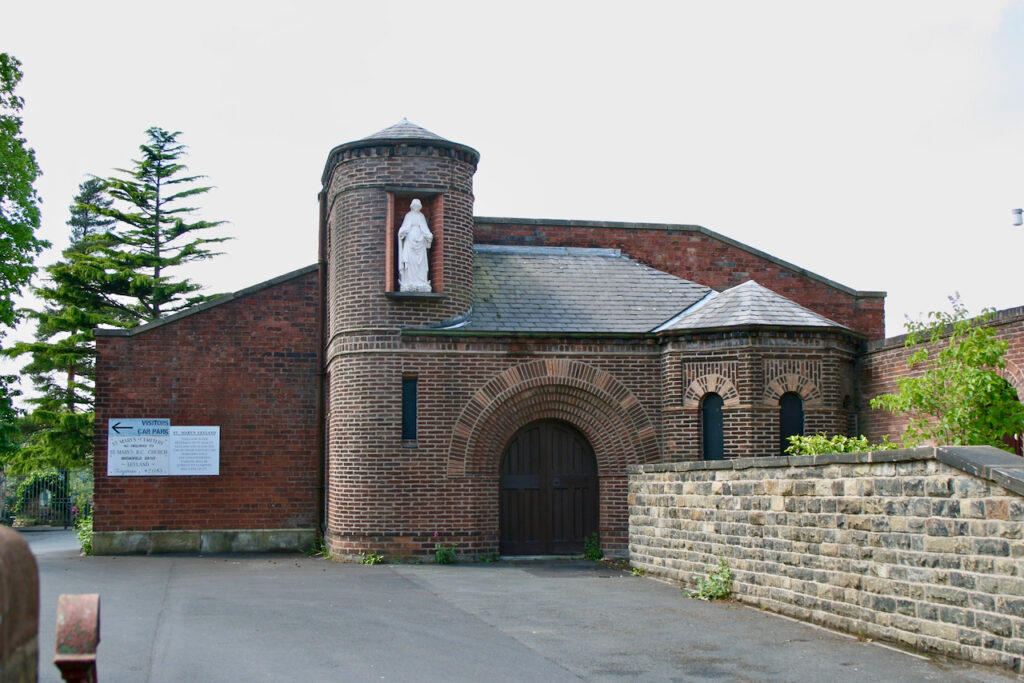
The Laurels
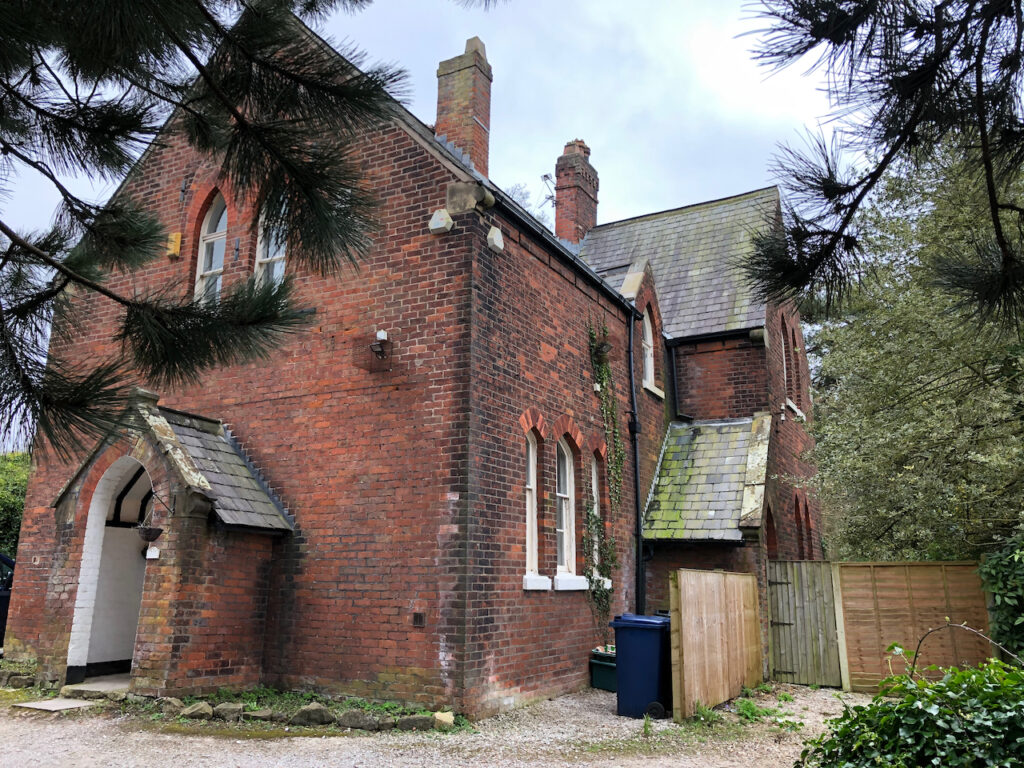
North Lodge
A very minor diversion from Worden Lane takes us to North Lodge and the entrance to Worden Park. The neoclassical North Lodge and gateway with its Tuscan style columns are still one of the main entrances to the parkland. The road that leads from it into the grounds is probably one of the original estate drives shown on the 1725 map. It forms a crossroads with another original drive ‘The Avenue’ which leads down towards the hall.
